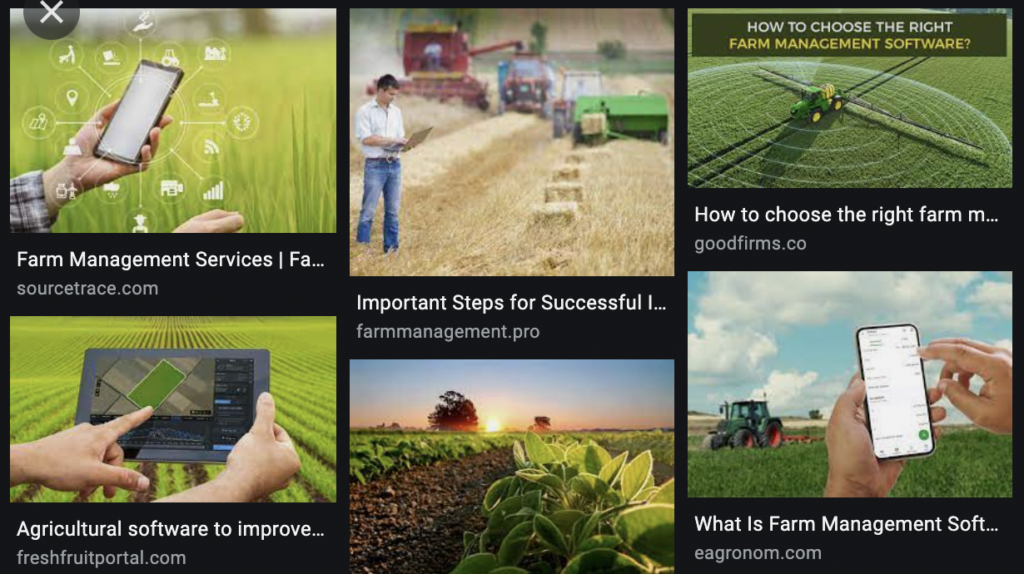Farm management software defined
Farm management software is a term that’s been around since before I started farming. New to farming in 2014, I started searching the internet for tools to manage and document my farm. This is what I would do in the industries where I had spent the past 10 years. The difference was that I found surprisingly few options. 8 years later, there are certainly more options, but they are so different I forgot what farm management was supposed to mean in the first place.

2014 was the early peak hype cycle for data platforms and IoT, so naturally “farm management software” back then was all about connecting all the data streams to one central platform. Tractors have a bunch of sensors, and so do the combines and sprayers. The typical story is that all the data from those machines is useless as long as it sits in isolated silos. If we can just bring it together, magic will happen. I know this storyline, cause I championed it in a different industry then. I also know the magic eluded us. Today, with 8 years of experience in farmers’ common sense and skepticism, I can conclude with confidence; it was all but a dream.
In the recent few years, the main focus of farm management software has been on fancy visualizations from drone or satellite imagery. I admit that there is something visually attractive about the green/yellow/red heat maps. It looks somewhat artistic. More than anything else, this topic highlights the gap between the corporate people in the agriculture industry and the farmers. The corporate people likes drone and satellite data because it’s easy to get hold of, and it lends itself nicely to storytelling with colorful imagery. The farmers barely lift their eyelids because it might slightly optimize their practices, but it doesn’t address any of their top concerns.
There is another angle these days. The farmer is often viewed as complex and negative, which is just a typical explanation when people fail to sell something. The knee-jerk response is to force adoption through the farmers’ customers. If you can get the wholesalers to force farm management software on all their farmers, you don’t have to fight for every single one. Clever tactics. Until you realize the farmer doesn’t like your stuff. Needless to say, this version of farm management software is defined by what the wholesalers want, not what the farmers want.
It is also important to consider what systems we are trying to replace. What systems are farmers using for their farm management today? And funny enough, the answer to this takes us closer to a proper definition of farm management software.
Some farmers still use pen and paper. Other farmers have moved to excel. And then, there was the wave of custom software development in the 1990s and 2000s – the age of the Microsoft Access database. Every coop built its database and invited/forced all its members to use it. It made sense at the time, but these databases are not flexible to change – in consequence, you can only add new features and never remove anything. Predictably, today, 20-25 years later, these systems look like avalanches of buttons and input fields, accompanied by inflexible numerical outputs. Anyhow, the data captured on paper, in excel, and in old-fashioned databases; that’s the data that matters to farmers. So that’s where the definition of farm management software needs to start.
Farm management is the management of daily operations of the farm, efficiently collecting and storing all essential business data. Business data in this context means only a small set of data Farmers need to run their business properly.
In order of importance:
- Spray and fertilizer logs
- Timesheets for season labour
- Harvest and sales logs
- Job delegation system (called project management in other industries)
- Documented dialogue with agronomy advisors
None of that is a complicated problem. You don’t need artificial intelligence to tackle it. You don’t need drone imagery either, but make no mistake, fancy tech isn’t the hard part of precision agriculture. The hard part is to deploy sufficient structure and diligence in the daily farm operations to manage these five bullets consistently and in the same data format day in and day out.
The reward of doing farm management in the right way is precision farming. And that’s when we can start talking about fancy tech. Until then, any dream or promise of precision agriculture benefits is flawed.
And if you think the recently hyped Bayer/Microsoft “partnership” or any other significant corporate promises will solve all this on behalf of the farmers, think again. There are now silver bullets. The way forward, although tedious, is for the farmers themselves to own their destiny and adopt their farming work processes to ways that lend themselves easily to digital integration.


Thanks for sharing. I read many of your blog posts, cool, your blog is very good.